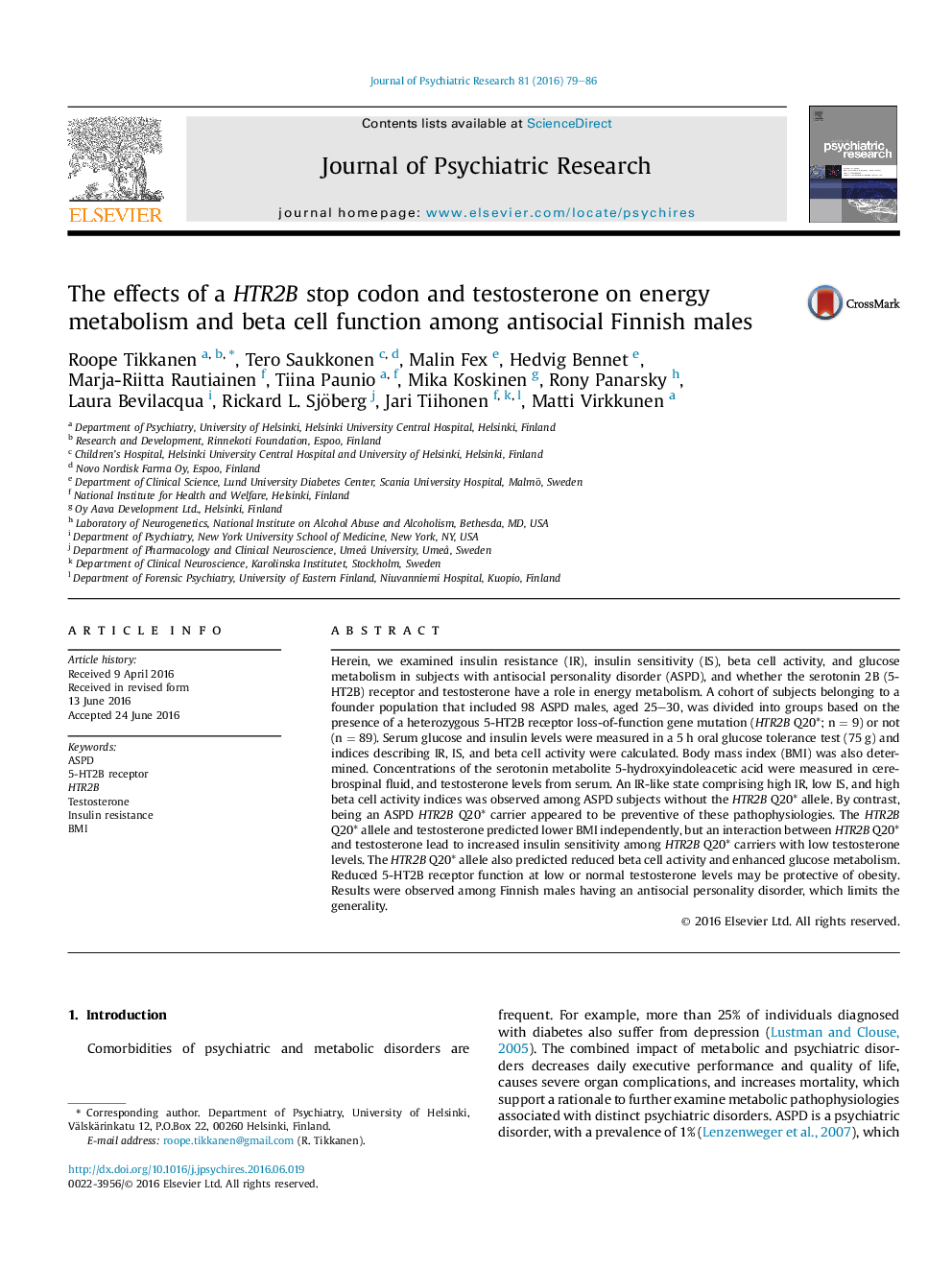| Article ID | Journal | Published Year | Pages | File Type |
|---|---|---|---|---|
| 326408 | Journal of Psychiatric Research | 2016 | 8 Pages |
Herein, we examined insulin resistance (IR), insulin sensitivity (IS), beta cell activity, and glucose metabolism in subjects with antisocial personality disorder (ASPD), and whether the serotonin 2B (5-HT2B) receptor and testosterone have a role in energy metabolism. A cohort of subjects belonging to a founder population that included 98 ASPD males, aged 25–30, was divided into groups based on the presence of a heterozygous 5-HT2B receptor loss-of-function gene mutation (HTR2B Q20*; n = 9) or not (n = 89). Serum glucose and insulin levels were measured in a 5 h oral glucose tolerance test (75 g) and indices describing IR, IS, and beta cell activity were calculated. Body mass index (BMI) was also determined. Concentrations of the serotonin metabolite 5-hydroxyindoleacetic acid were measured in cerebrospinal fluid, and testosterone levels from serum. An IR-like state comprising high IR, low IS, and high beta cell activity indices was observed among ASPD subjects without the HTR2B Q20* allele. By contrast, being an ASPD HTR2B Q20* carrier appeared to be preventive of these pathophysiologies. The HTR2B Q20* allele and testosterone predicted lower BMI independently, but an interaction between HTR2B Q20* and testosterone lead to increased insulin sensitivity among HTR2B Q20* carriers with low testosterone levels. The HTR2B Q20* allele also predicted reduced beta cell activity and enhanced glucose metabolism. Reduced 5-HT2B receptor function at low or normal testosterone levels may be protective of obesity. Results were observed among Finnish males having an antisocial personality disorder, which limits the generality.
